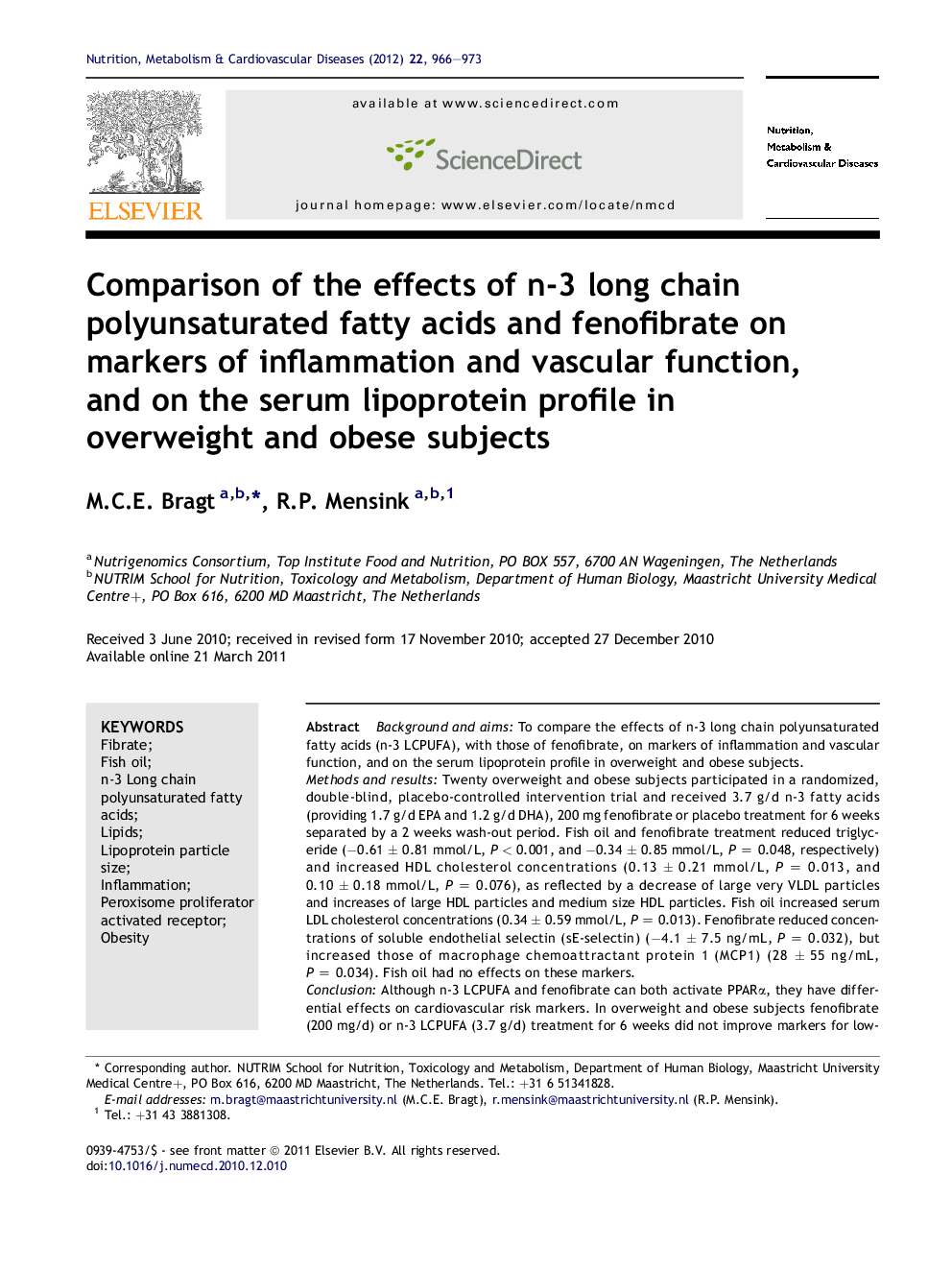| Article ID | Journal | Published Year | Pages | File Type |
|---|---|---|---|---|
| 5996811 | Nutrition, Metabolism and Cardiovascular Diseases | 2012 | 8 Pages |
Background and aimsTo compare the effects of n-3 long chain polyunsaturated fatty acids (n-3 LCPUFA), with those of fenofibrate, on markers of inflammation and vascular function, and on the serum lipoprotein profile in overweight and obese subjects.Methods and resultsTwenty overweight and obese subjects participated in a randomized, double-blind, placebo-controlled intervention trial and received 3.7 g/d n-3 fatty acids (providing 1.7 g/d EPA and 1.2 g/d DHA), 200 mg fenofibrate or placebo treatment for 6 weeks separated by a 2 weeks wash-out period. Fish oil and fenofibrate treatment reduced triglyceride (â0.61 ± 0.81 mmol/L, P < 0.001, and â0.34 ± 0.85 mmol/L, P = 0.048, respectively) and increased HDL cholesterol concentrations (0.13 ± 0.21 mmol/L, P = 0.013, and 0.10 ± 0.18 mmol/L, P = 0.076), as reflected by a decrease of large very VLDL particles and increases of large HDL particles and medium size HDL particles. Fish oil increased serum LDL cholesterol concentrations (0.34 ± 0.59 mmol/L, P = 0.013). Fenofibrate reduced concentrations of soluble endothelial selectin (sE-selectin) (â4.1 ± 7.5 ng/mL, P = 0.032), but increased those of macrophage chemoattractant protein 1 (MCP1) (28 ± 55 ng/mL, P = 0.034). Fish oil had no effects on these markers.ConclusionAlthough n-3 LCPUFA and fenofibrate can both activate PPARα, they have differential effects on cardiovascular risk markers. In overweight and obese subjects fenofibrate (200 mg/d) or n-3 LCPUFA (3.7 g/d) treatment for 6 weeks did not improve markers for low-grade systemic inflammation, while fenofibrate had more profound effects on plasma lipids and markers for vascular activity compared to fish oil.Registration number clinical trials EudraCT 2006-005743-28.
